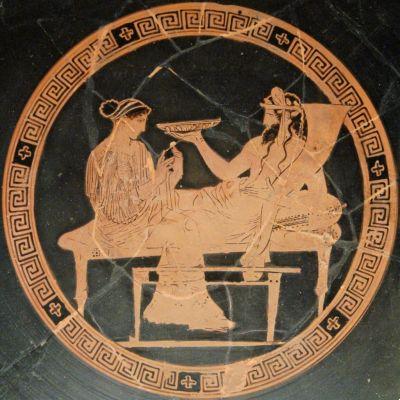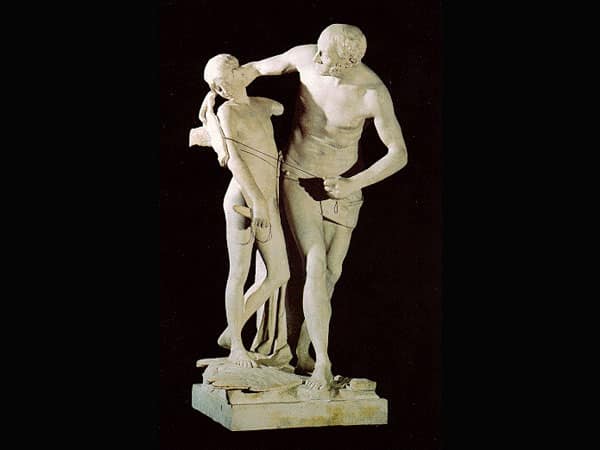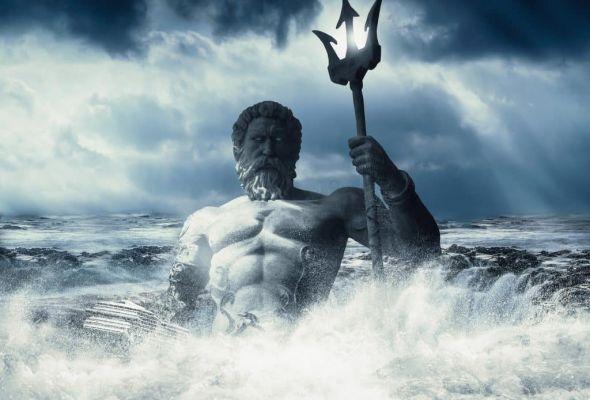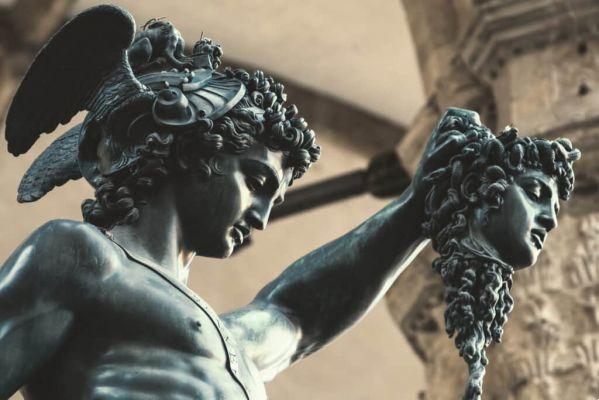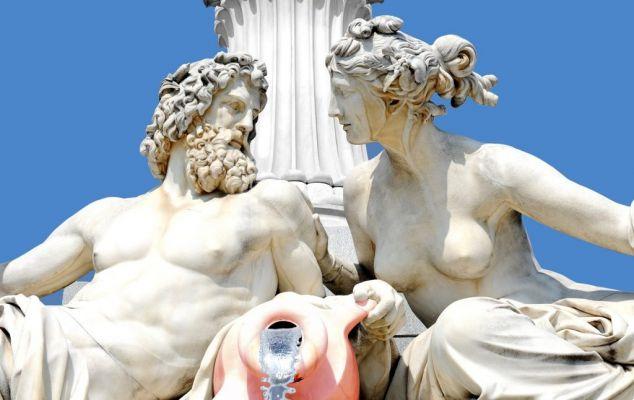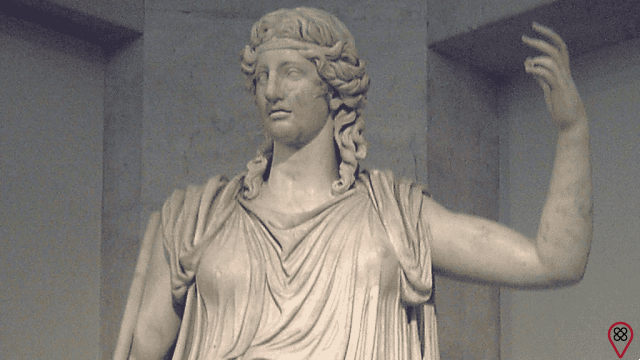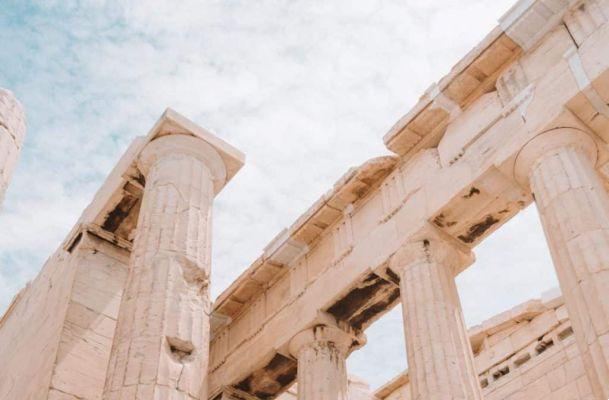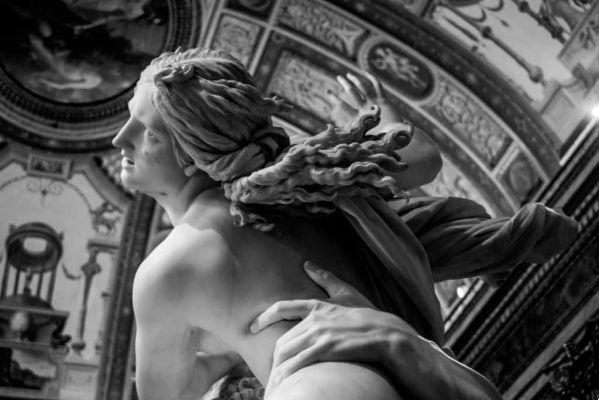Artemis, also known as Artemis — to some, Diana — is a Greek goddess related to hunting and wildlife. Over time, she became the goddess of the moon and magic. The goddess was one of the daughters of Zeus and Leto, and the twin sister of the sun god Apollo. The people of a Mesopotamian city called Akkad believed that she was the daughter of Demeter, goddess of cultivation, harvesting and agriculture. Also considered goddess of childbirth and protector of girls, Artemis was portrayed as the most efficient hunter among all gods and all mortals. Like her brother Apollo, the goddess also had the gift of bow and arrows.
Origin and history of Artemis
- Birth

There are several accounts that hover about the birth story of Artemis and Apollo, her twin brother. But, among the many speculations, there is a common point between all of them: all versions agree that she was really the daughter of Zeus, the supreme god, and Leto, goddess of the night, being, also, the twin sister of Apollo.
The most prevalent story is that Hera, Zeus' wife at the time, possessed by jealousy due to her husband having betrayed her with Leto, wanted to prevent her from giving birth, arresting the goddess who was giving birth at the time. As the people of that region feared Hera greatly, no one offered Leto any kind of help, but Poseidon took her to a floating island, called Delos. After a few days, Hera freed Ilicia, upon receiving a certain payment, and the goddess of childbirth went to the island where Leto was to help her give birth. For this to be possible, Zeus had to distract Hera. So, after nine nights and nine days, Leto gave birth to Artemis and Apollo. Legend states that the Moon Goddess was born earlier than her brother, the Sun God.
- Childhood and youth
There are not many accounts of Artemis' childhood. The Iliad limited the image of the goddess to a simple female figure who, after suffering a blow from Hera, resorts to her father, Zeus, in tears.
The Greek mythographer Callimachus wrote a poem in which he narrates the early childhood of the Moon goddess. In it, he tells how, at just three years old, Artemis asked Zeus to grant her six requests: that he always keep her a virgin (she didn't want to get married); to be the goddess who possessed the light; having several names that could differentiate her from Apollo; dominate all mountains; to have sixty nymphs under her dominion to be her company and to have the gift of bow and arrows and a long hunting robe to light the world.
Believing that she had helped her mother during the birth of Apollo, Artemis believed that she had the task of being a midwife. All the women who accompanied her did not marry and remained virgins; even Artemis closely watched such chastity. The symbols that represent the Moon Goddess are: bow and arrows, the deer, the Moon and hunting animals.
According to Callimachus' accounts, Artemis spent much of her childhood looking for things necessary for her to be a hunter; and from that quest she found her bow and arrows on an island called Lipara. The Moon Goddess started her hunts by hitting trees and branches with her arrows, but as time passed, she started shooting wild animals.
– Chastity
As she never wanted to marry and decided to remain a virgin, Artemis was a strong target for many men and gods. But it was Orion, a giant hunter, who won her romantic gazes. Orion died as a result of an accident, caused by either Gaia or Artemis.
Artemis lived and witnessed some male attempts against her virginity and the fidelity of her companions. In a moment, the moon goddess managed to escape from the river god, Alphaeus, who yearned to capture her. Some stories claim that Alphaeus tried to force Arethusa (one of Artemis' nymphs) to have sex with him, but Artemis protected her mate by turning her into a fountain.
Later, Bouphagos is struck by Artemis, after the goddess reads his thoughts and discovers that he intended to rape her; as well as Sipriotes, who accidentally sees Artemis taking a bath, but she turns him into a girl.
Myth of Artemis

The Artemis myth declares the story of a goddess completely different from all others. She was a goddess who did not get involved or interfere with the relationships of others, let alone allow men or gods to come close to her physical body. Her greatest appreciation was for freedom from nature. Artemis felt complete when she was in contact with animals.
As one of the most important goddesses in Greek mythology, Artemis became a strong female symbol. In her myth, there are two facets: women who can't stand and don't want to have contact with men and still deny their presence, and the other is that of the goddess who wears a long robe to walk through the fields and lives surrounded by wild animals. ; while she hunted the animals, she was also their friend.
Orion was the only man who had any relevance in Artemis' life, but some people believe he was just a hunting companion, while others believe he was the love of her life.
– Cult of Artemis
His most famous cults took place in the city of his birth, on an island called Delos. Artemis was always depicted in paintings, drawings and statues in which she was always surrounded by nature, with a bow and arrows in her hand in the company of a deer. In her rites, some people sacrificed animals in worship of her.
There is a myth that a bear often visited Brauro, where there was the shrine of Artemis where several young girls were sent to serve the goddess for about a year. As such a bear was a regular visitor, it was fed by the people, and over time it became a domesticated animal. There was a girl who always played with the animal and some versions of this myth claim that he set his fangs in her eyes, or that he killed her. But anyway, this girl's brothers managed to kill him, but Artemis was angry. She imposed that the girls behave like a bear while at her sanctuary, as a remission for the animal's death.
Her cults were filled with young girls who danced and worshiped Artemis, as the goddess taught them. Her rites were extremely relevant in Ancient Greece, so much so that she won a temple for herself in Ephesus - today it is considered one of the Seven Wonders of the Ancient World.
Artemis Archetype

Artemis represents ambiguity or the two feminine facets: the one who cares and the one who destroys; the one that understands and the one that kills. Even with her decision to remain a virgin, Artemis was also loving, while at the same time feeding her vanity and her fondness for revenge.
Many demonize the image of this goddess, but others seek to understand her archetype in a way that makes it possible to see a female model that stands out in the face of a male society: in her history, she is the one who makes her decisions; she decides what she wants to do and how to do it; she deals with her choices and stands firm in the face of her attitudes.
Image of Artemis
Artemis is represented as a woman with her hair tied back who carries her bow and arrows, as she is considered the goddess of hunting and protector of wild animals. In her most common depiction, she is seen holding a deer in one of her hands.
You may also like
- Learn all about Greek Mythology: culture that emerged in Ancient Greece
- Be Impressed by the 7 Greek Goddesses and Their Archetypes
- Learn to take good care of the goddess or god that dwells in you
What did you think of the Moon Goddess story? Share this article with your friends and surprise them with the important tales of Greek mythology!



